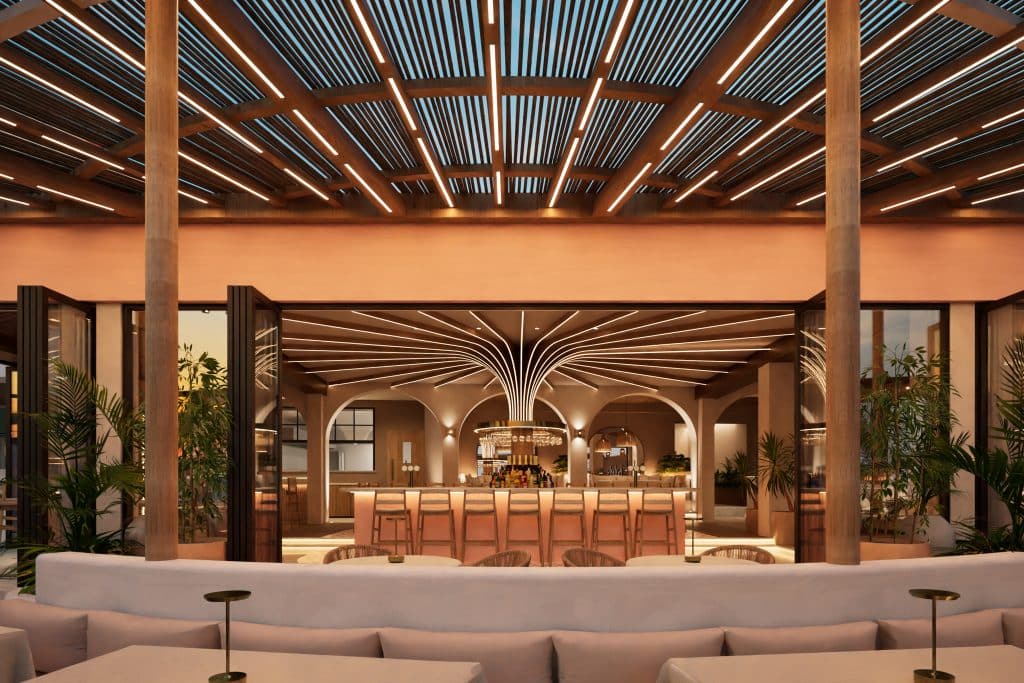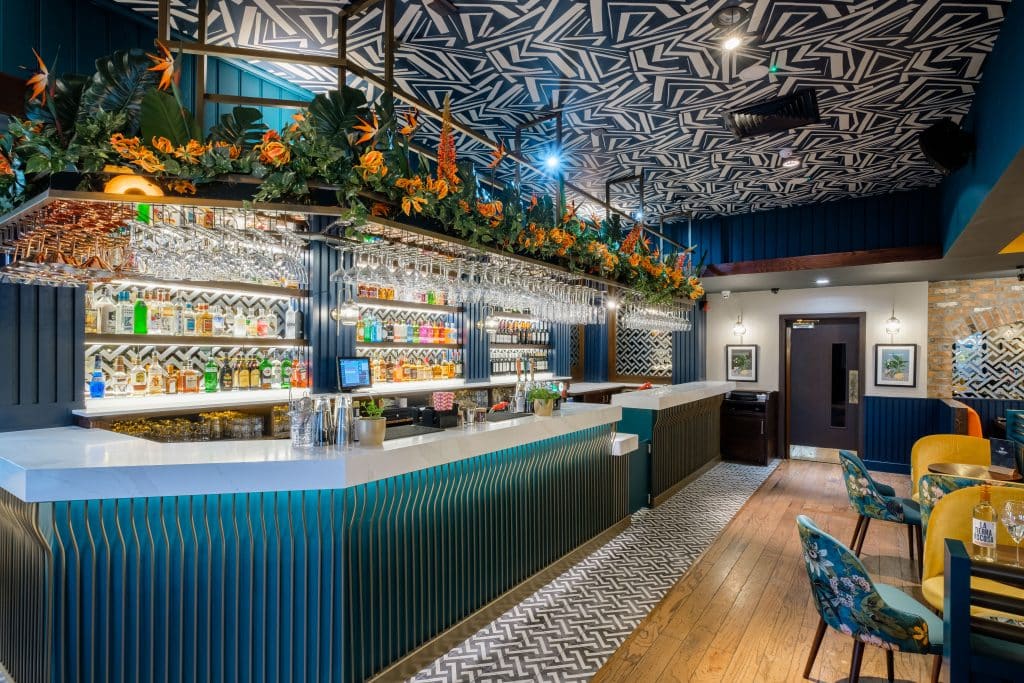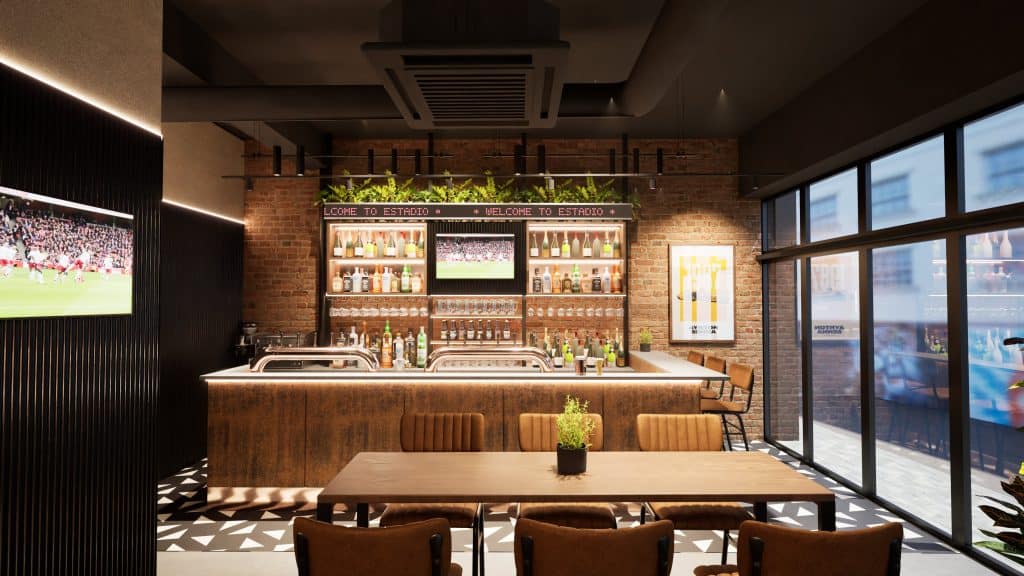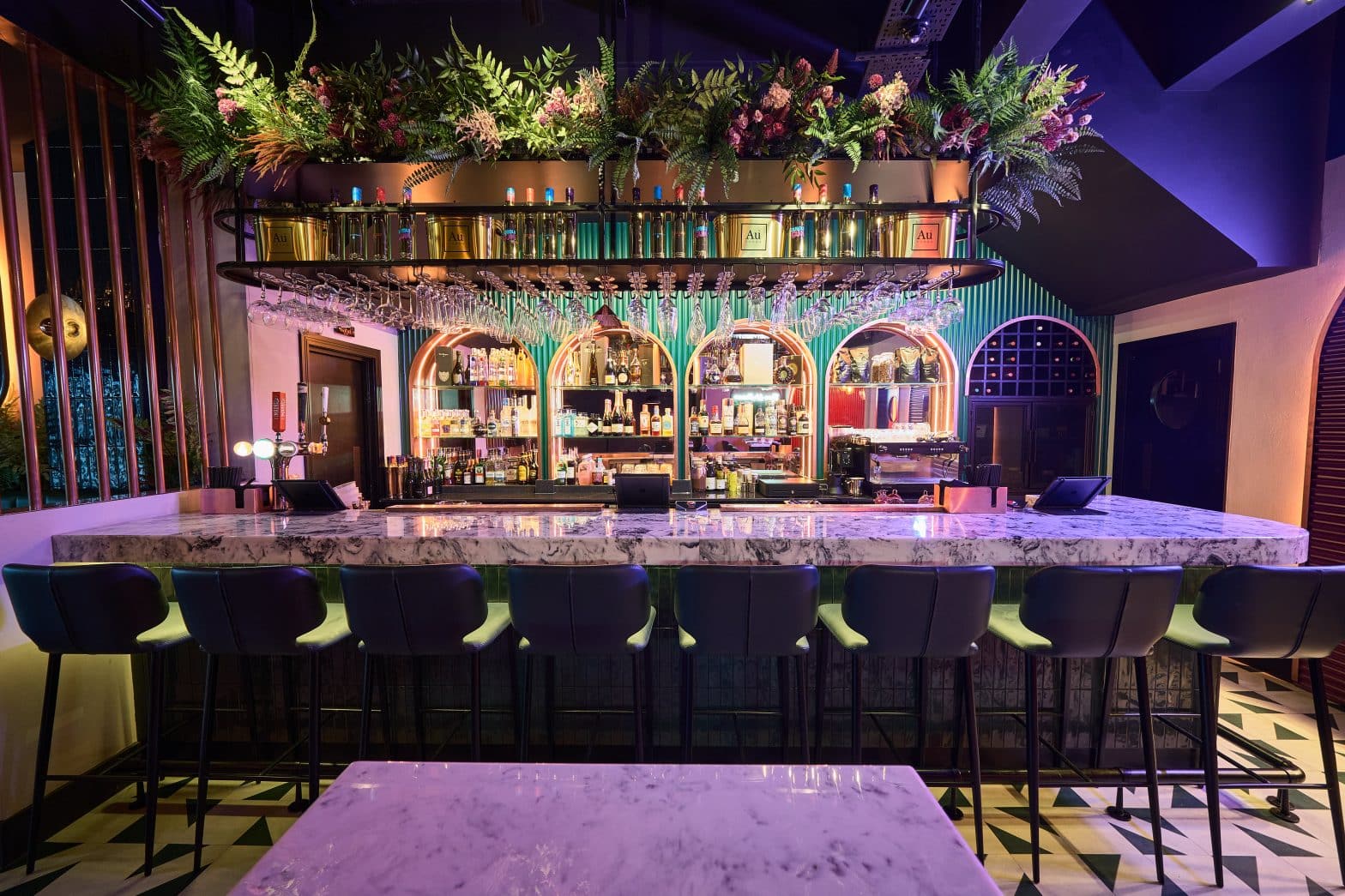Creating Spaces That Elevate Experience and Revenue
Bars have become an essential part of modern restaurant design. Beyond serving drinks, a well-designed bar shapes atmosphere, extends the customer journey, and can make a real difference to revenue. For many diners, the evening starts and ends at the bar — a pre-dinner cocktail to ease in, a relaxed nightcap to finish off. And for operators, just a couple of extra drinks per couple can make a noticeable impact on the bottom line.
At Copper & Ash, we’ve helped clients across the hospitality spectrum integrate bars into their restaurants in ways that feel seamless and purposeful. From Michelin-level dining to relaxed neighbourhood spots, each space brings its own set of opportunities and challenges. This guide explores the key elements of restaurant bar design, and how thoughtful choices can transform both customer experience and commercial performance.

1. Why Bars Matter in Modern Restaurants
Bars do so much more than fill a corner of the floor plan. They act as social hubs, boost margins, and often become the most memorable touchpoint of a dining experience. A well-considered bar space can:
- Encourage guests to linger before and after their meal.
- Set the tone and energy for the whole restaurant.
- Drive extra revenue through higher-margin drink sales.
- Express the brand story in a tangible, atmospheric way.
For one of our Michelin-style clients, adding a dedicated bar completely changed the rhythm of the evening. It offered guests a luxurious place to unwind before their meal, setting the tone beautifully while also opening up new revenue opportunities.
2. Positioning: Defining the Role of the Bar
Where the bar sits in the space has a huge influence on how it’s used. Is it a destination in its own right, or more of a welcoming waiting area? When positioning a bar, we always look at:
- Visibility from the entrance to create an instant focal point.
- Sightlines to the kitchen and dining areas to make service efficient.
- How it fits into customer flow to avoid overcrowding or dead zones.
One mid-to-high dining project comes to mind where the client wanted the bar to double as a drop-in drinks space. The challenge was to keep the energy inviting without overwhelming the dining area. Through smart positioning, acoustic treatments and circulation planning, we achieved the right balance.
3. Scale and Proportion: Getting the Balance Right
Size really does matter when it comes to restaurant bar design. Too big, and the bar can dominate the room. Too small, and you’ve got a bottleneck on your hands.
Getting this right means:
- Matching bar capacity to peak service times.
- Considering the overall scale of the restaurant.
- Integrating seating cleverly so the space can flex as needed.
Done well, the bar feels naturally proportioned, like it’s always belonged there.

4. Designing for Atmosphere and Ambience
Bars can set the mood, amplify energy or create intimacy, depending on the concept. Lighting, acoustics and layout all play a part.
- Lighting is a powerful tool. Warm, layered lighting creates intimacy, while bold lighting suits more casual, energetic concepts.
- Acoustic treatments control sound, helping the bar buzz without drowning out conversation.
- Layout and screening help guide how people use the space, adapting to different moods throughout the day.
For fine dining spaces, we often lean into softer lighting and elegant finishes. In more relaxed venues, openness and a lively buzz work wonders.
5. The Back-Bar: A Visual Anchor
The back-bar often steals the show. It’s the visual anchor of the space and a chance to tell your story.
- Use materials and finishes that reflect the personality of your restaurant.
- Light it well to create drama and draw the eye.
- Make sure it looks good from every angle, not just from the bar stools.
A well-designed back-bar can become the jewel of the restaurant, reinforcing brand identity and encouraging people to stay for “just one more.”

6. Furniture and Seating: Shaping the Experience
The way you furnish the bar area can completely change how people use it.
- High stools create energy and are great for quick drinks.
- Lounge seating invites longer stays and relaxed conversations.
- Standing space keeps things flexible during busy periods.
7. Operational Flow and Practicality
A beautiful bar is only half the story, it needs to work brilliantly for the team behind it too.
- Efficient layouts keep service smooth and fast.
- Clever storage avoids clutter and keeps things looking sharp.
- Proximity to the kitchen and pass helps everything run like clockwork.
When aesthetics and operations work hand in hand, you get a bar that not only looks great but runs effortlessly too.
Designing Restaurant Bars That Work Beautifully and Work Hard
Restaurant bar design sits right at the intersection of atmosphere, experience and strategy. Get it right, and you create spaces that elevate the entire dining journey, boost revenue and strengthen your brand identity.
At Copper & Ash, we approach every bar project with a blend of creativity and pragmatism. Whether it’s a statement bar in a fine dining space or a flexible drinks hub in a neighbourhood restaurant, we design with purpose, tailoring each concept to the client’s goals and personality.Take a look at some of our recent hospitality work, including Isabel’s and Beleza to see how thoughtful bar design comes to life.
- Inside the UK QSR Boom- How Design Is the New Competitive Edge - November 28, 2025
- Fast, Flexible, and Forward-Thinking, The Role of Design in the UK QSR Industry - October 20, 2025
- How Commercial Interior Design Defines Your Brand Identity - October 20, 2025

